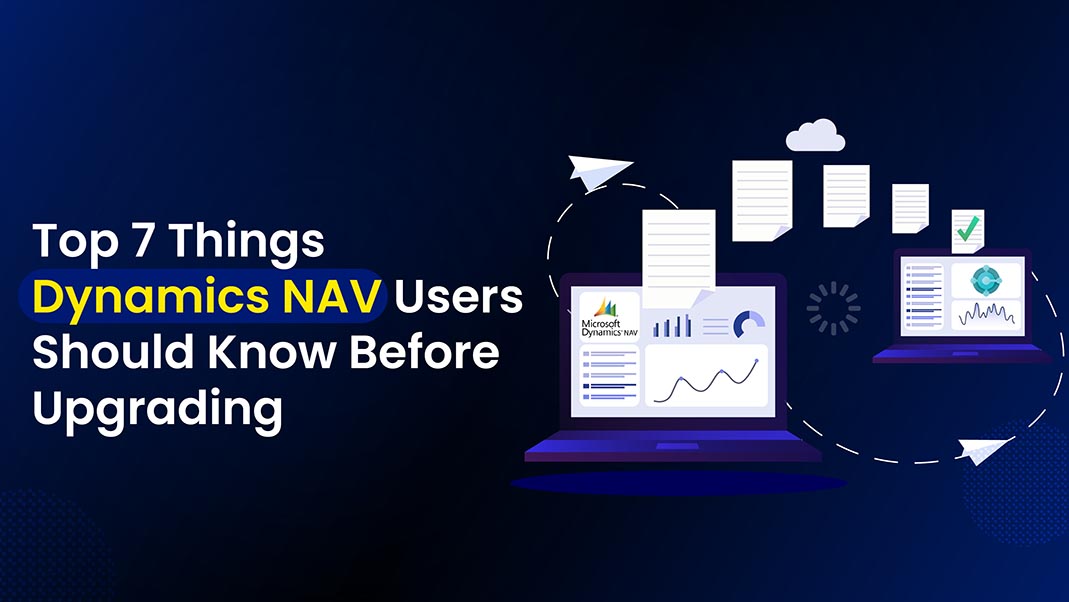Upgrade your Sage accounting software to Microsoft Business Central
In the current competitive environment, businesses are questioning the efficacy of their business processes.
Finance is crucial to the majority of businesses, and this is one of the most crucial technology platforms within a company. Sage has historically been regarded as the preferred accounting software system. Competitors, such as Microsoft Dynamics 365 Business Central, now offer the same capabilities, in addition to a number of other advantages.
Consequently, if you feel that your existing accounting software is monotonous, Sage to Business Central Migration:
1. Scalability
Every business evolves and grows. Therefore, you require software that can expand with your business. Microsoft Business Central is scalable and therefore relevant to both SMBs and multinational corporations.
This contrasts with Sage, which, depending on the version, restricts the amount of users and functionality (20 users in the case of Sage 50 and 50 in the case of Sage 200).
Even though both solutions can be cloud-based (for near-infinite scalability), they are not comparable: Business Central Microsoft resides within Microsoft’s extremely resilient, worldwide cloud architecture. Sage’s cloud environment appears to be less robust, with products susceptible to outages and problems.
2. Accessibility and Learning Curve
Sage has an unquestionably steep learning curve. While many of the capabilities make obvious to people with a background in accounting, other Sage data consumers will struggle. In contrast, most individuals familiar with a CRM or ERP system can access Business Central data rather easily. Business Central also offers simple, real-time reporting using dashboards and Microsoft Power BI.
Sage, in contrast, asks users to check for updates before upgrading. In some circumstances, customers must manually download these updates.
3. Automation
Automation in the workplace is one of the best methods to save time and boost productivity. And Sage’s lack of automation features is a major drawback of the product.
In contrast, Microsoft Business Central is famous for its features to automate vendor records, payment reconciliation, and other manual tasks. As a Microsoft product, Dynamics Business Central also connects with Microsoft business products including Word, Excel, and (most importantly) Outlook. This, in turn, provides additional automation options and possible time savings, which is a major advantage in Sage to Business Central Migration.
4. Performance and Integration
Microsoft Business Central is designed to deliver optimal performance and adapt to your evolving business requirements. The comprehensive solution includes both ERP and CRM system functionality in a single integrated cloud solution. It also provides solutions for the many departments of an organization to facilitate collaboration, and it integrates easily with other business software.
In contrast, most versions of Sage are confined to basic accounting features. And while Sage accounting software can interface with other apps, it often requires an API or third-party software to accomplish this. This adds both an additional degree of system complexity and increased security vulnerabilities.
5. Infrastructure and Maintenance
As previously stated, Dynamics 365 Business Central resides in Microsoft’s cloud environment. Here, the programme is protected by and equipped with powerful security safeguards. Any vulnerabilities are addressed automatically, and twice-yearly updates add new functionality. Microsoft further backs up its platform in the event of hosting troubles. Sage, in contrast, asks users to check for updates before upgrading. In some circumstances, customers must manually download these updates.
This procedure can be inconvenient for Sage cloud users. It can also be somewhat complicated for non-cloud Sage users, as organizations will often need to shut down their accounting software (and whatever server it resides on) during the update. This can be an expensive proposition and inconvenient due to the fact that it must be done out-of-hours.
Sage to Business Central Migration
Sage has dominated the accounting industry for decades. However, it is an aging system. Typically, features that have been introduced over time have been tacked on, so they feel disconnected or require middleware to function. Sage’s cloud architecture is an afterthought and appears less strong than it should be.
Microsoft Business Central, in comparison, is a significantly more modern platform. It covers the same accounting area as Sage, but adds CRM features, enhanced reporting, and native interaction with Outlook and the broader Microsoft 365 application suite. Similarly, Business Central is designed for cloud-first use, with all the associated benefits.
Considering Sage to Business Central Migration to enhance your ERP system? Nevas Technologies Quick Start Business Central Implementation plan will deliver a new Microsoft cloud ERP in just seven working days.
To schedule a Microsoft Business Central demo, please contact us.




